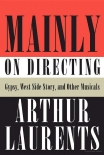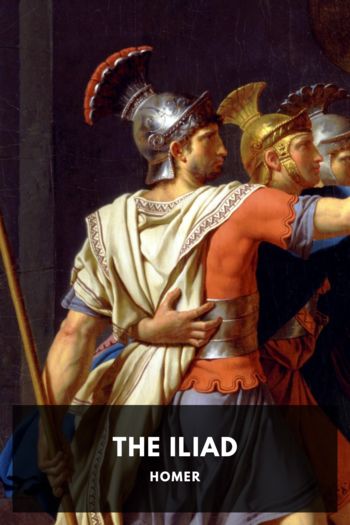Mainly on Directing, Arthur Laurents [best books for students to read TXT] 📗

- Author: Arthur Laurents
Book online «Mainly on Directing, Arthur Laurents [best books for students to read TXT] 📗». Author Arthur Laurents
Joey's real triumph was with the second-act ballet that had never satisfied Jerry Robbins himself. Every day of the out-of-town tryout, Jerry had changed the ballet, often ordering new backdrops. (One looked like the Jersey swamps.) Joey re-created the ballet beautifully, it couldn't have been better danced, not even by the New York City Ballet, which regularly performs a West Side Story Suite, a popular success as ballet world, a pallid facsimile as theatre. It wasn't easy not to say anything with the company waiting after Joey showed me his version. I took him and Lori into another room and said it: “Joey, it's a dance concert. It has nothing to do with this West Side Story.”
We had talked earlier of what he considered his responsibility— to be faithful to Jerry's choreography—and what I considered mine—to be as faithful as I could to the original everything but to change what I felt was essential to give this West Side Story a reason for living. That had already been done with two problematic songs. The conversion of the opening “Jet Song” from a fifties musical-comedy number to the credo of a vicious gang had begun with Cody Green at his audition; it was comparatively easily completed in rehearsal. “Gee, Officer Krupke” was an obstacle course I could only blame on myself. I had insisted on a comedy number in the second act to relieve the tension, invoking Shakespeare and his porter scenes to convince the others. In the uncinematic, mangled, and also anti—Puerto Rican movie, its position was shifted to the first act, which turned the gang even more into musical comedy chorus boys. Steve, who had advocated the switch, switched himself, saying it belonged back in the second act. But it didn't belong in this second act as the smack-out vaudeville red-nosed clown comedy-show stopper it was in the original. In this second act, the murder of two friends was deeply felt and acknowledged. How could “Krupke” be sung without ignoring that? By the attitude of the first singer—Action, the angriest member of the gang. He's already been to the police station and made fools of the police. His singing is delighted defiance, which disgusts A-rab. He and his cohort, Big Deal, use Baby John as a puppet as they do the song. Nothing is a vaudeville turn, everything is an over-the-top put-down of everything society upholds. There is no choreography; it's a musical scene where the gang members explode with black humor, which finally draws even A-rab in.
As difficult as “Krupke” had been to make part of the play, the second-act ballet was much more so. When I detailed to Joey what I thought might make the ballet not a ballet, he moved fast, too fast at first, but always on the right track. Incorporating specifics like having a grubby street kid sing “Somewhere” and ending the song and what was the ballet with Tony and Maria, turned out to be the key to what was and is Joey's triumph. Jerry's ballet steps are still there but they now have a purpose and an emotional center. Call it the second-act ballet, call it “Somewhere,” call it whatever you will, but it now has meaning, it's moving, it belongs in the play, and for the first time it's part of the love story.
All these changes plus, of course, the addition of Spanish, make this West Side Story obviously unlike any other. But what makes it deeper and richer, really different, is something that probably will go unnoticed by most people: it is acted, and acted extremely well, by the entire company, from dancers without a line (but many an ad-lib) to the major characters—not merely as never before but as well as any nonmusical actors of any stature could. And it's all established in the first intimate scene, the so-called ladder scene that introduces Tony and “Something's Coming.”
That scene, between Tony and Riff, is the first love scene in a play about love in a world of violence and bigotry. It has always been played fast and a bit coyly, primarily as a lead-in to a two-four that isn't quite a two-four and falls short as does the scene. Examine it, dig into it as one would with a scene in a play, and it becomes wrenching and essential to the telling of the story. It is a love scene that establishes the time and the theme of the play.
Each boy needs the other, but Tony no longer loves Riff as he did. Probably, at that age, there was some homoerotic element, but it's the love that's important. Riff's love for Tony explains why he keeps covering for him with the gang, keeps him in the gang when he knows Tony isn't and doesn't want to be, even gets killed because of that love. The tough leader of the gang in the preceding scene is here the vulnerable lover. Tony is a little older and has left boyhood and adolescent love. But we must know that he loved Riff to believe he is capable of the love that is on its way. A few cuts to eliminate quasi-boyishness and too much invented language, the scene now leads directly into “Something's Coming” as the reason for what we have just witnessed: the end of a love affair. It isn't a two-four, it's a growing discovery of who Tony is through his discovery of what he is hoping for.
That treatment eliminates the usual cuteness in the next scene, where Maria and Anita are introduced, and continues into the Dance at the Gym, where Tony and Maria meet. Played by Matt Cavanaugh and Josefina Scaglione, the nonliteral dialogue spoken during a slow cha-cha becomes, for the first time, a sexually charged love scene. And





Comments (0)